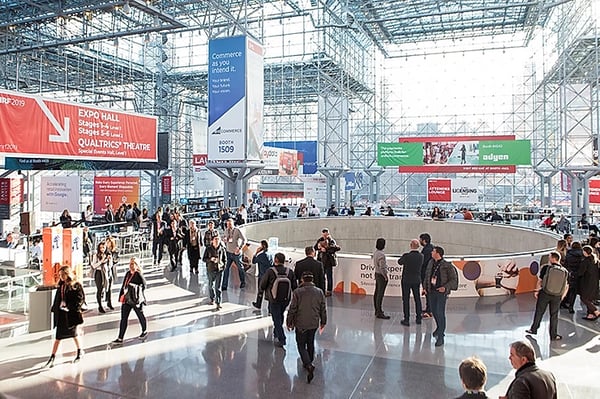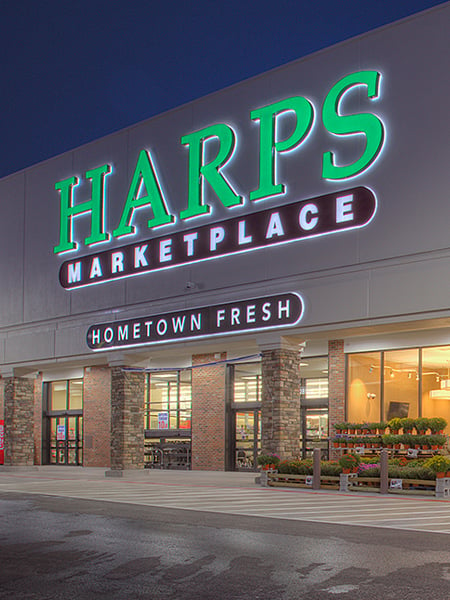Crew at NRF 2019
by Scott Van Brunt, on January 22, 2019
There’s a reason they call it the “Big Show”. With close to 40,000 attendees and 4,000 different retailers gathering in New York City, there’s nothing small about the flagship NRF event, the biggest retail conference of the year. And if you didn’t make it to this year’s event, we’ve got you covered in terms of the biggest trends and takeaways.
The War for Talent
There was one macroeconomic factor that was simply inescapable across all of the sessions — the labor market is extremely tight, unemployment is quite low, and it’s a real challenge for retailers to attract and retain employees. From store associates to managers, retailers are having to invest more and work harder to ensure they have the right talent. That is leading retailers to look for every advantage in order to stand out and differentiate themselves; particularly among millennial and younger workers. While pay and benefits are an important part of that equation, retailers are also realizing that “softer” factors — a team-based culture, transparent communication, more scheduling flexibility and ability to more easily swap shifts — are things that are often equally as valued.
“Giving our employees the ability to easily communicate on their mobile devices, to have their schedules in their pocket, and to easily swap shifts definitely helps us stand out in terms of attracting talent. It was a huge differentiator this holiday season when bringing on lots of seasonal employees.”

The Shared Experience of Customers and Employees
While every retailer and brand has forever placed utmost importance on the customer experience, there’s increasing attention and investment paid to the employee experience. There is recognition that it’s ultimately the frontline associates and in-store employees that make that customer experience ‘come to life’, who hold the keys to increasing a store’s conversion rate, and that will make or break any transformation or change management effort. Retailers are investing more to understand what employees are looking for in their everyday job and what tools and technology can make them more successful. And we heard from retailers that the analytics and financials support those investments — happier more engaged employees are helping deliver better experience in-store and that flows directly to the topline.
“It’s an imperative right now; we are in a labor-driven business, and if you don’t invest in your team, give your employees the tools they need to succeed, and think everyday about the experience of your associates in the store, you’re not going to be successful.”
Offline is the New Online
Obviously online is the future, brick and mortar is on its last legs, and every “traditional” retailer wants to be like the upstart “digital native” retailers that have made a big splash in recent years, right? Wrong. While there’s no denying the success of the many “direct-to-consumer”, online brands that have enjoyed real success in recent years (e.g., Warby Parker, Bonobos, AllBirds), all of these companies are also branching out into physical retail stores. There’s growing recognition that the cost to acquire a user online is increasing as various online marketing channels (like Instagram) become more saturated, and that traditional brick and mortar retail represents a compelling and potentially more cost-effective way to scale these brands and acquire new users.
At the same time, there was a lot of discussion (and a lot of technology being exhibited) geared towards helping traditional retailers adopt a more online-centric view of behavior within their stores. Traditional in-store analytics may have just been limited to number of customers entering the store; which combined with sales data would provide some view into conversion rates. Now, however, new technologies are helping retailers measure the full “funnel” and physical path of consumer behavior in the store — e.g., going from entering the store to browsing merchandise to trying on an item to checkout. They are also enabling tracking of new metrics like the amount of time spent in-store (“dwell time”), metrics that traditionally would have been more familiar to an online product manager than an an in-store operations manager.
“We think there’s a strong ‘halo effect’ of retail and physical stores on the online business. If someone spends time in our store, gets to touch and feel the physical product, and has an awesome experience with the brand, we think that will make them a more loyalty customer. And we’re ambivalent if the lifetime value (LTV) of a customer comes from the retail store or online. From a metrics perspective, it’s not about the LTV of a customer within this channel vs. that channel, it’s about the LTV of that customer holistically.”
All in all, the NRF Big Show was a great opportunity to meet and hear from retail leaders. The retail winners in 2019 will differentiate through attracting and retaining talent, investing in the customer and employee experience, and understanding the online to offline journey.


